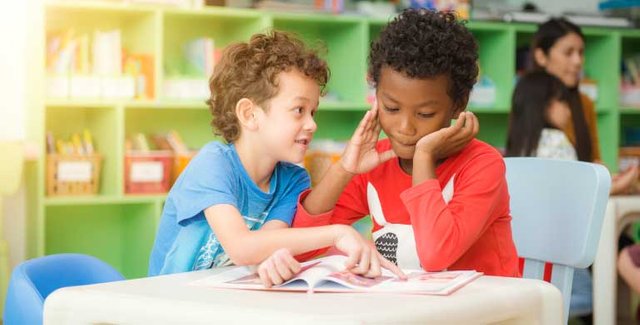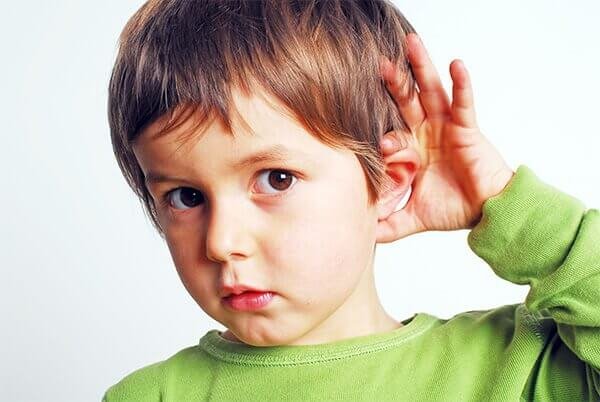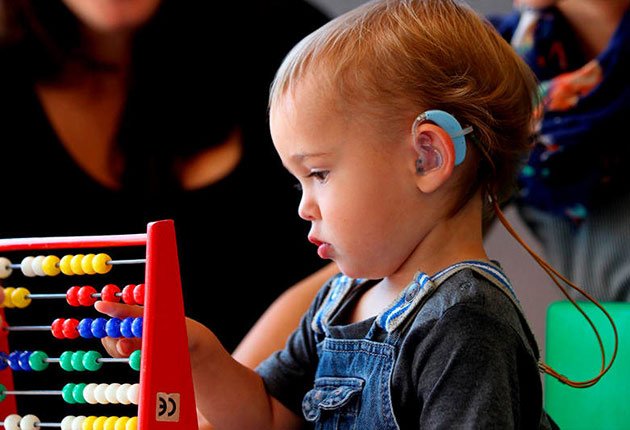Currently, the term auditory disability encompasses all types and degrees of hearing loss, whether it is mild or profound. The repercussions that a hearing loss has on cognitive and language development are very varied. Since with the same problem, it is possible for a child to have minimal consequences, while for another it may suppose a greater incidence, the degree of affectation of the hearing losses in the development depends on the different degrees of the disease, the individual characteristics of each child, the family and social environment and the education received.

source
From an educational perspective, students with hearing disabilities are usually classified into two main groups:
Hard of hearing. Students with poor hearing, however, is functional for their daily lives, although they require the use of prostheses.
Deep deaf. They are considered profound deaf schoolchildren whose hearing is not functional for daily life.
The main differential characteristic between the two types is that while the hypacics are able to acquire oral language through auditory, this is not possible in the second group.
Hearing problems affect, to a greater or lesser extent, the generation and development of phonological representations, which are mental representations based on sounds or phonological groups of speech. This difficulty creates a series of problems or differential aspects in the different areas of the child's development.
The development of language does not occur spontaneously, but its acquisition and development is the result of intentional learning mediated by the environment, family environment, possibility that parents have the same problem, need to use sign language.
Delay in the vocabulary as a result of slow phonological development.
Late development of the symbolic game, which may affect intellectual evolution.
Delays and limitations in the control and acquisition of certain behaviors.
From a certain severity of auditory deficit, begin to occur difficulties in the acquisition and assimilation of knowledge due to problems in the reception of information and its proper preparation.
Problem in reading texts.

source
To a greater or lesser extent depending on the cases and as a consequence of the repercussions of the hearing disability in the different areas of development mentioned in the previous point, the educational needs of these students can be specified in the following:
The early acquisition of a communication system, whether oral or sign, that allows cognitive development and communication skills and promotes the process of socialization.
The development of the capacity of comprehension and written expression that allows autonomous learning and access to information.
The stimulation and the use of residual hearing and the development of phono articulatory capacity.
The construction of self-concept and positive self-esteem and balanced emotional development.
The obtaining of continuous information of what happens in their environment and of norms, values and attitudes that allow their social integration through complementary ways to hearing.
The personalization of the teaching and learning process through the adaptations of the curriculum that are necessary.
Use of technical equipment for the use of auditory remains, logopédico and curricular support and, where appropriate, the acquisition and use of sign language.
A fundamental aspect when approaching the education of children with hearing impairments is that if they do not have other associated deficiencies, their intellectual capacity is similar to that of those who have a hearing within normal parameters. Therefore, although in some cases there may be a certain delay in their cognitive development, this can be corrected in the classroom with support and reinforcement measures, since it is usually motivated by secondary causes such as: linguistic difficulties, problems of regulation, feelings of insecurity or difficulties in their social relationships.
Students with deafness need very early to acquire a communication system, either oral or signed, that allows them a standardized general development. Consequently, they will require the stimulation and the use of their auditory remains as well as visual strategies and direct experimentation of reality. This way, they will be able to obtain more information about what is happening around them in order to form a positive self-concept-self-esteem and a balanced emotional development.

source
- Spatial and environmental resources, an example of these technologies are the luminous or vibrotactile warning devices.
Human resources, support teachers, hearing and language specialists, specific equipment for the hearing impaired and sign language interpreters.
The hearing aid, the cochlear implant is only installed in cases where the dysfunction of the hair cells is the origin of deafness. Its efficacy is greater in post-lingual deafness before the age of three and according to auditory training and logopedic rehabilitation.
Frequency modulated systems, which collect the sound signal through a microphone, for example, the voice of the teacher and transmit it by waves to the student's or student's hearing aid. A similar system is the ring or magnetic loop, which converts the sound source into magnetic.
The equipment for auditory training, SUVAG, GAES 100 KT that serve to learn to discriminate sounds and associate them with facial lip reading.
The computer aids for the visualization of speech parameters, They refer to a set of programs for the visual feedback of the oral expression related to the mode of articulation, the intonation and the intensity.
The computer aids for the stimulation of language development, such as the LAO program, for the individualized realization by the professional of various exercises related to texts, phrases and words.
I used to be completely deaf. And I saw the people standing, and giving all kinds of turns. They called it dance. It seemed absurd to me ... Until one day I heard the music. Then I understood how beautiful the dance was. "Anthony De Mello"
Identification of children with this disability is the hardest and is a challenge for the teacher
Downvoting a post can decrease pending rewards and make it less visible. Common reasons:
Submit
Yes friend but, everything is possible when it is proposed in this life.
Downvoting a post can decrease pending rewards and make it less visible. Common reasons:
Submit
Your words are so thoughtful and heart-touching.
These children need love and care not only from their family but from their teacher as well.
Downvoting a post can decrease pending rewards and make it less visible. Common reasons:
Submit